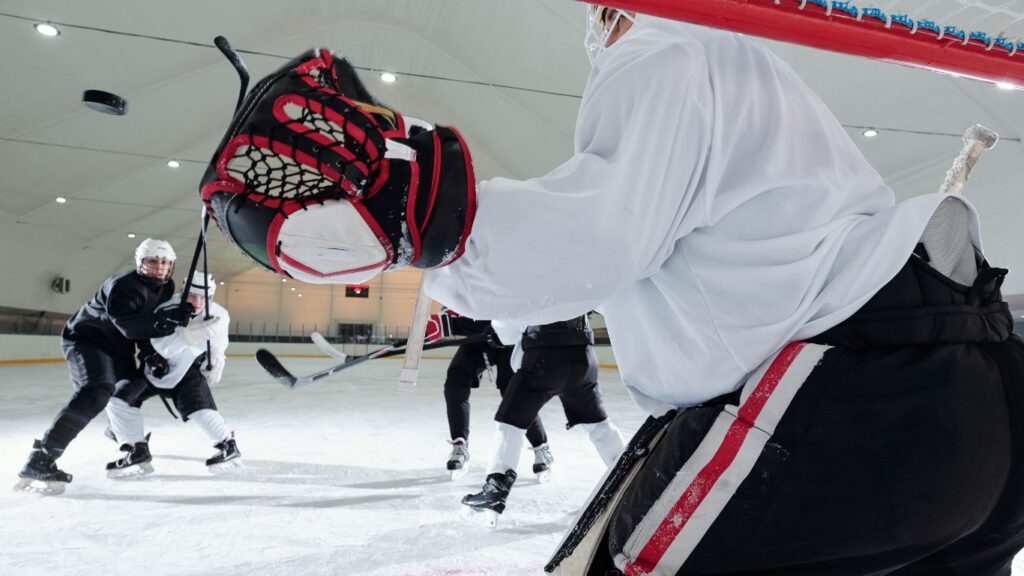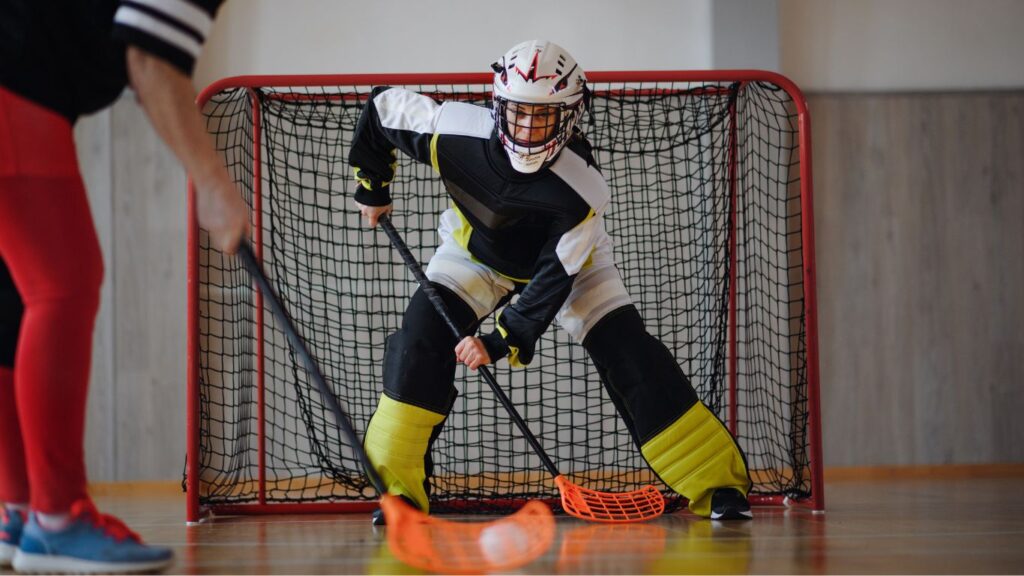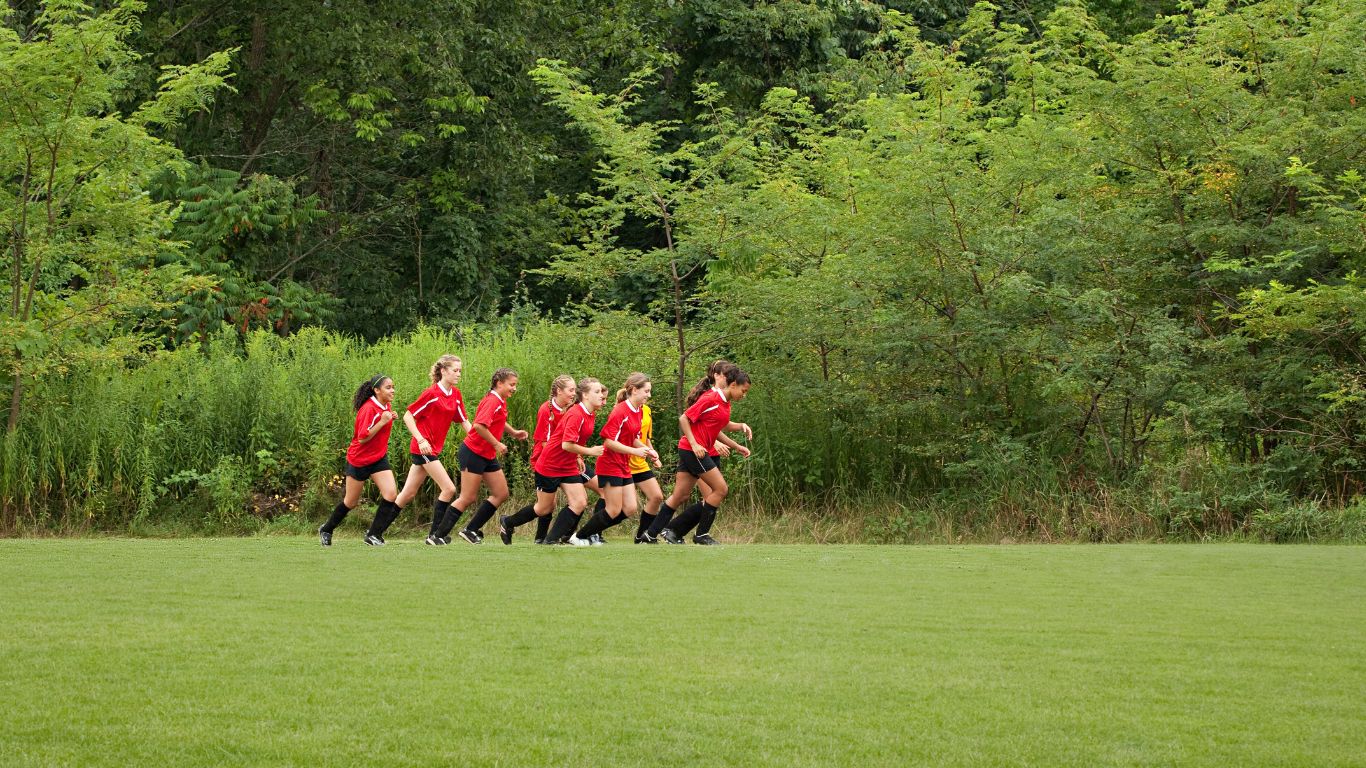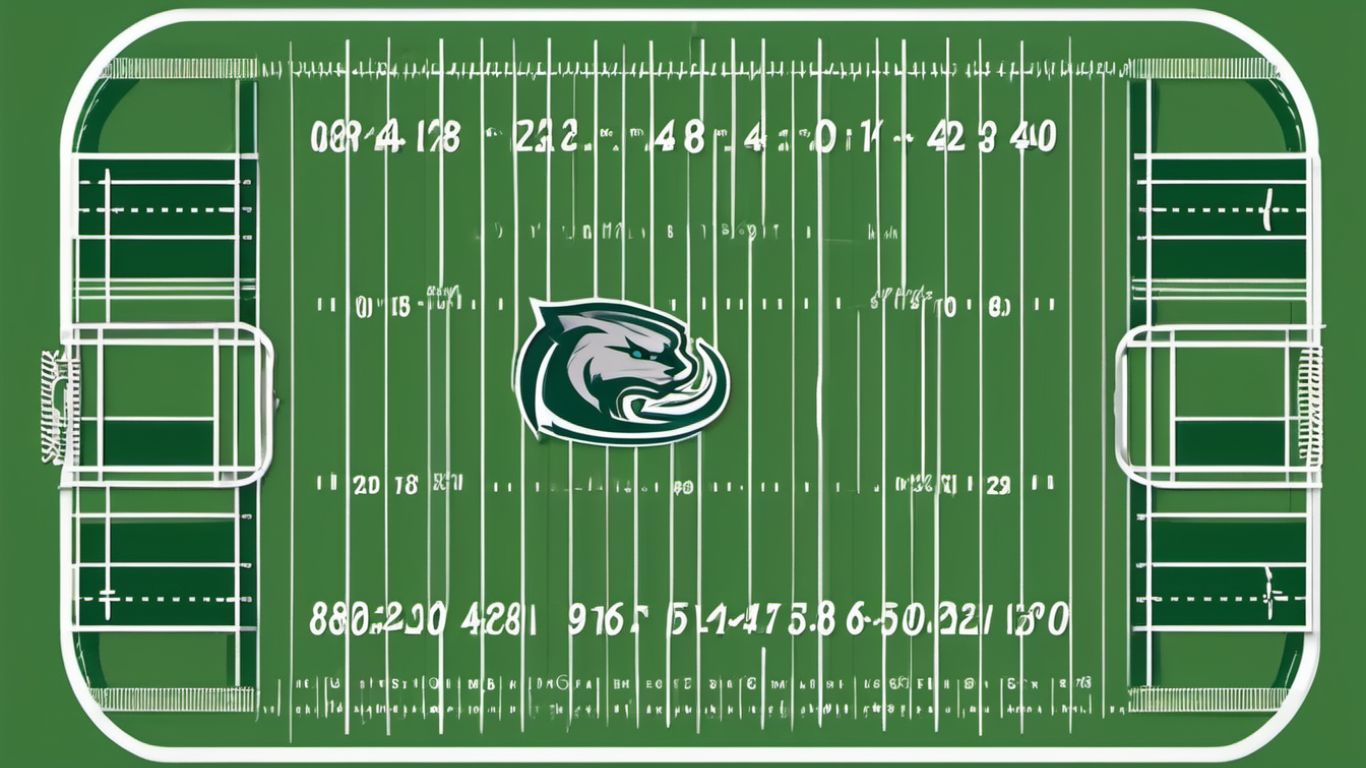In ice hockey, the Crease plays a significant role in ensuring fair play and protecting goaltenders. This blog will explore its definition, importance, rules, historical context, real-world scenarios, and the privileges it grants to goaltenders.
Definition of the Hockey Crease
The hockey crease is a semicircular area marked in front of each goal net. It serves as a boundary for goaltenders, providing them with special privileges such as protection from being interfered with by opposing players. The Crease helps define the area where the goalie can play the Puck without penalties and is crucial in determining the legality of goals scored.
Purpose of the Crease in Gameplay

- Protection for Goalies: The Crease ensures that goaltenders can perform their duties without interference from attacking players.
- Fair Play: It helps in enforcing rules regarding goaltender interference and the legality of goals.
- Visual Cue: The marked area serves as a visual cue for players and officials, aiding in the regulation of play around the goal.
- Injury Prevention: By defining a protected space, the Crease reduces the risk of injuries to goaltenders.
Evolution of Crease Rules
Introduced in 1945 by the NHL, the hockey crease aimed to clearly define the area where goaltenders had exclusive rights. Before this, disputes over the legality of goals and goaltender interference were common. Over the years, the dimensions and rules regarding the Crease have been adjusted to maintain a balance between protecting goaltenders and allowing free play around the net.
Importance of Goalie Interference Rule
The goalie interference rule is essential for maintaining fair play and game integrity. If an attacking player makes contact with a goalie within the Crease, it typically results in a penalty. Goals scored during such interference are disallowed, ensuring that goaltenders can defend the net without unfair hindrance.
Controversies Surrounding Crease Violations
Despite clear rules, controversies often arise regarding crease violations:

- 1999 Stanley Cup Finals: Dallas Stars’ series-winning goal against the Buffalo Sabres was heavily scrutinized to determine if the Puck had been kicked in, sparking debates on crease rule interpretation.
- 2017 Regular-Season Game: An Edmonton Oilers goal was disallowed due to goaltender interference, leading to questions about the consistency of crease rule enforcement.
- 2003 Playoffs: A Colorado Avalanche goal against the Minnesota Wild was overturned after review, highlighting the need for more precise guidelines on goalie interference.
Crease Violations and Penalties Explained
- Entering the Crease Before the Puck: Attacking players can only enter the Crease after the Puck. Violation results in a disallowed goal and a faceoff outside the offensive zone.
- Goaltender Interference: Opposing players cannot interfere with the goaltender within the Crease. Contact results in penalties and disallowed goals.
- Playing the Puck in the Crease: Players can enter the Crease to play the Puck unless the goalie has clear possession and control.
Goalie Privileges Within the Crease
- Exclusive Rights: Goaltenders have the exclusive right to the Crease, free from interference.
- Legal Goal Determination: Crease violations often lead to disallowed goals.
- Puck Freezing: Goalies can freeze the Puck to stop play without pressure from opponents.
- Contact Leeway: Recognizing the Crease’s high-traffic nature, incidental contact within the Crease is often given leeway.
FAQs
What is the purpose of the hockey crease?
The hockey crease serves multiple purposes, including protecting goaltenders from interference by opposing players, providing a clear visual cue to players and officials, ensuring fair play, and reducing the risk of injuries to goalies by defining a protected area.

When was the concept of the hockey crease introduced?
The NHL introduced the concept of the hockey crease in 1945 to clearly define the area where goaltenders had exclusive rights. This helped mitigate disputes over the legality of goals and actions around the net.
What happens if an attacking player enters the Crease before the Puck?
If an attacking player enters the Crease before the Puck, it typically results in a disallowed goal and a faceoff outside the offensive zone. This rule helps maintain fair play and protect the goaltender.
How is a goal disallowed due to goaltender interference?
A goal is disallowed due to goaltender interference if an attacking player makes illegal contact with the goalie within the Crease, preventing the goalie from making a save. Such actions usually result in penalties against the offending player.
Can a player enter the Crease to play the Puck?
Yes, a player can enter the Crease to play the Puck, provided the goalie needs clear possession and control of the Puck. If the goalie has control, any interference by an opposing player could lead to a penalty.
What are the goaltender’s exclusive rights within the Crease?
Given the high-traffic nature of the Crease, the goaltender has several exclusive rights within the Crease, including protection from interference, the ability to freeze the Puck to stop play, and allowances for incidental contact.
Are there any famous controversies regarding crease violations?
Yes, some famous controversies include the 1999 Stanley Cup Finals, where there was debate over a series-winning goal by the Dallas Stars and a 2017 regular-season game in which an Edmonton Oilers goal was disallowed due to perceived goaltender interference, raising questions about consistency in rule enforcement.
How does the crease aid in injury prevention for goalies?
By clearly defining a protected space around the net, the Crease helps reduce the risk of collisions and injuries to goalies, who are often vulnerable to physical contact while focusing on making saves.
Conclusion
The hockey crease is pivotal in shaping gameplay dynamics. It ensures goaltenders have the necessary protection to perform their roles effectively while maintaining the game’s integrity through enforceable rules. Understanding Crease’s significance enhances appreciation for the strategic elements of hockey and the critical balance between offence and defence.
By recognizing the essential role of the Crease, players, officials, and fans can better appreciate the complexities of the game and contribute to its fair and exciting nature.










